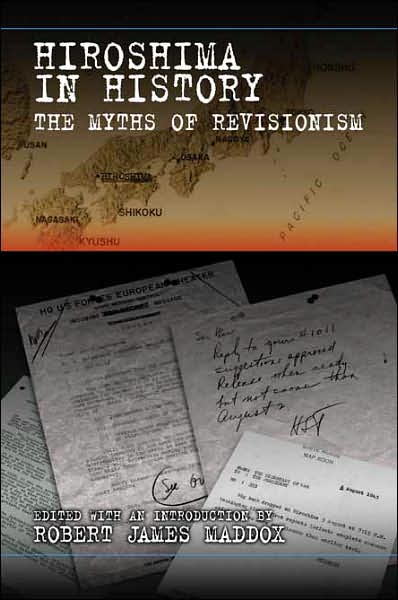Why Another Book on Hiroshima?
A sampling of revisionist fictions treated in Hiroshima is as follows:
1. That intercepted messages between Tokyo and Japanese diplomats abroad during the summer of 1945 revealed Japan’s willingness to surrender.
None of these messages even hinted that Japan was prepared to surrender under any circumstances. Some members of what Robert P. Newman has referred to as the “civilian elite” were trying to enlist the Soviet Union in brokering a peace that would have permitted Japan to escape with its prewar empire and imperial system intact. Several enterprising revisionists, including Kai Bird and Martin J. Sherwin in their recent Pulitzer Prize-winning American Prometheus: The Triumph and Tragedy of J. Robert Oppenheimer (2006), have misrepresented these messages by the simple device of pretending that the word “peace” meant the same thing as “surrender.” They neglect to inform their readers that as late as 17 July 1945 the Japanese foreign minister stated that “we are not asking [for] the Russians’ mediation in anything like unconditional surrender. . . .”
Sadao Asada’s essay in Hiroshima, based largely on Japanese sources, shows how difficult it was for the Japanese “peace party” to prevail over the hardliners in the government even after both bombs had been dropped and the Soviet Union had entered the war. That they could have done so before these catastrophic events is impossible to credit.
Edward J. Drea points out that regardless of what the diplomats were trying to accomplish, intercepted military traffic (ULTRA) revealed that the Japanese military was “struggling around the clock to turn Kyushu’s beaches [site of the first planned invasion] into massive killing grounds.” And the generals controlled the situation, not the civilians.
2. That Harry Truman sought to delay Soviet entry into the Pacific War because he was afraid such a move would precipitate Japan’s surrender before the bombs could be dropped.
There is abundant evidence that Truman actively sought Soviet participation in the war and welcomed it when it came. Michael Kort’s essay in Hiroshima examines a recent version of this revisionist chestnut, Tsuyoshi Hasegawa’s prize-winning Racing the Enemy: Stalin, Truman, and the Surrender of Japan (2005). Kort shows that the documents simply do not support Hasegawa’s contention that Truman engaged in a “race” to use the bombs before Stalin entered the war.
3. That even if an invasion proved necessary, Truman’s claim in his memoirs that the invasion would have cost an estimated five hundred thousand American lives was a post war creation designed to justify the unjustifiable. Actual casualty estimates were but a fraction of that number.
D. M. Giangreco’s “A Score of Bloody Okinawas and Iwo Jimas” demolishes the “low” casualty thesis. He shows that figures as high or even higher than Truman claimed were commonplace at the upper levels of government and at least some were shown directly to the president. The title of a second Giangreco (and Kathryn Moore) essay, “Half a Million Purple Hearts,” tells it all. The number of these medals struck mocks the “low” casualty claim.
4. That the debate over the Enola Gay exhibition at the National Air and Space Museum (NASM) in 1995 was one between those who wished to rely on “trustworthy documents now at hand” and those who wished to present a “largely fictitious, comforting story.”
Robert P. Newman’s chapter in Hiroshima shatters this myth. He shows that instead of consulting prominent scholars in the field, NASM relied on an unqualified in-house staff that had ideological axes to grind.
5. That the United States Strategic Bombing Survey, a postwar study based largely on interviews with surviving Japanese officials, showed that Japan was on the verge of surrender and would have done so by 1 November 1945 “even if the atomic bombs had not been dropped, even if Russia had not entered the war, and even if no invasion had been planned or contemplated.”
Criticizing Truman on the basis of information unavailable to him when the bombs were dropped is intellectually untenable, of course, but there is more. Gian P. Gentile and Robert P. Newman make clear that the survey was “cooked” by Paul Nitze to fit predictions he had made earlier that conventional bombing alone would have caused Japan to surrender before 1 November.
Hiroshima in History reveals that although revisionists differ among themselves on particulars, the overall thrust of their work does a disservice to the historical record.
Related Links
HNN Hot Topics: Hiroshima, What People Think Now HNN Virtual Trial: Harry Truman on Trial

